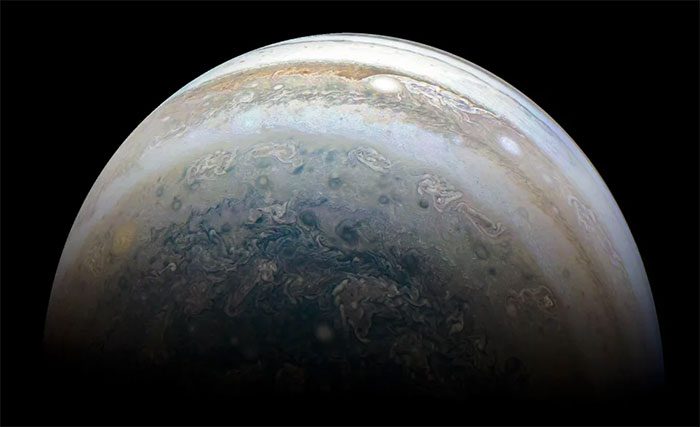On October 31, the National Aeronautics and Space Administration (NASA) announced that the Juno spacecraft has, for the first time, discovered mineral salts and organic compounds on the surface of Ganymede, one of Jupiter’s moons.

Image of Jupiter taken by Juno spacecraft camera on May 23, 2018. (Photo: AFP/TTXVN).
According to NASA, this discovery indicates that salty water underground is reaching the surface of this icy world. The data was collected by the Jovian Infrared Auroral Mapper (JIRAM) onboard Juno during its flyby of Jupiter’s icy moon.
Larger than Mercury, Ganymede is the largest moon of Jupiter and has long been of great interest to scientists due to the vast ocean hidden beneath its thick icy crust.
On June 7, 2021, Juno flew past Ganymede at a minimum altitude of 1,046 km. Immediately after the closest approach, the JIRAM instrument captured infrared images and spectra of the surface of this largest satellite in the Solar System.
The aforementioned images achieved unprecedented spatial resolution for infrared spectroscopy. According to NASA, through this data, scientists can detect and analyze the unique spectral features of materials other than water, including hydrated salts, ammonium chloride, sodium bicarbonate, and possibly fatty aldehydes.


















































